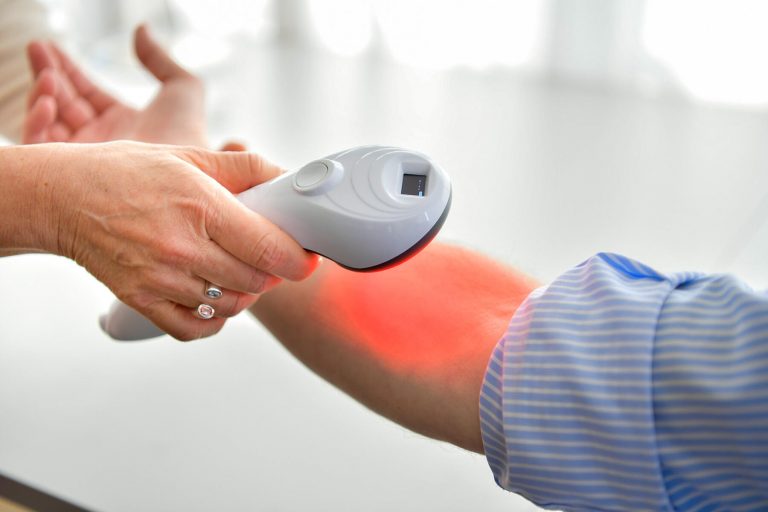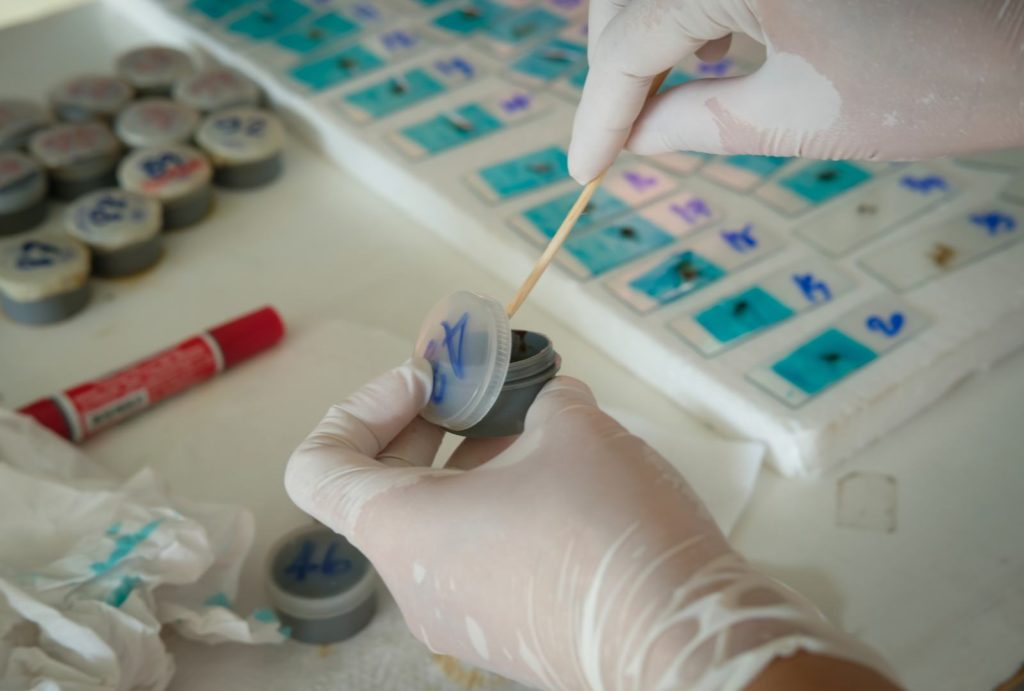I want to introduce you to one of my most recent acquisitions. I recently purchased a Milta Pod and thanks to its compact size ans user-friendly interface I am able to carry it to my consultations when I travel to Geneva. But what is a MIlta Pod? It’s a holistic approach to healing in a gentle way through bringing down inflammation at tissue level. It combines advanced healing technologies with therapeutic techniques to promote physical, mental, and emotional well-being.
At the heart of the Milta Pod is its innovative use of infrared technology. Infrared light, with its longer wavelengths, has been shown to penetrate deep into the body, stimulating the mitochondria within cells. This stimulation enhances cellular metabolism, increases circulation, and promotes tissue healing. Regular sessions with Milta Pod lead to a range of potential benefits, including accelerated tissue repair, reduced inflammation, pain relief, improved circulation, and enhanced immune function.
Whether one is recovering from injury, managing chronic conditions, or simply seeking to optimize overall wellness, regular sessions translate in a non-invasive and approach to supporting the body’s natural healing mechanisms. Scroll down to discover the healing technologies in 2025.

Healing Technologies in 2025
Effects of Milta Pod
The pod is typically equipped with LED lights emitting specific wavelengths of soothing infrared light, carefully calibrated to maximize therapeutic efficacy and calming effects on body tissues and mind. These lights can be adjusted to different intensities and colors to suit individual needs. Milta Pod can be used whenever tissue needs repairing. In other words it helps heal, lowering inflammation and supporting repair. Skin issues like eczema or acne, hair loss, joint pain, lack of motivation, sleep issues, difficulties concentrating, depression, can all be improved from within.
Users can relax within the pod for designated sessions, allowing the gentle warmth of the infrared light to permeate their tissues and promote healing. In summary, the Milta Pod leverages the proven benefits of infrared light therapy to support healing and rejuvenation. It offers a targeted and effective solution to enhance overall health and well-being.
Oligo Check Device
In a few seconds and with 4 measurements on the skin of your palm, this device measures the quantity of minerals present in your soft tissues and also of toxic metals. Minerals are necessary in various physiological functions in our body. They are essential nutrients and although they are needed in micrograms, they’re still critical to our health.
But what minerals are present in our bodies and what is their role specifically in our body?
Here’s a brief overview and apologies if this will end up being a little like a groceries’ list,
- The first mineral that comes to mind is Calcium /Ca.
- Calcium is crucial for building and maintaining strong bones and teeth. It also plays a role in muscle function, nerve transmission, and blood clotting.
The second one is probably Iron. Iron is essential for the production of hemoglobin, the protein in red blood cells that carries oxygen throughout the body. It’s also involved in energy metabolism. - Magnesium comes third – It is involved in hundreds of biochemical reactions in the body, including energy production, muscle function, and regulation of blood pressure.
We then have Potassium, Sodium and Zinc. - Potassium is important for maintaining fluid balance, nerve transmission, and muscle contraction, including the heartbeat.
- Sodium helps regulate fluid balance and blood pressure, and it’s also involved in nerve function.
- Zinc is necessary for immune function, wound healing, DNA synthesis, and cell division.
The next three although fundamental are less known:
Selenium is an antioxidant that helps protect cells from damage caused by free radicals. It also plays a role in thyroid function and the immune system.
Iodine is essential for the production of thyroid hormones, which regulate metabolism and are crucial for growth and development.
Phosphorus: Phosphorus is a component of bones and teeth and is involved in energy metabolism and cell signaling.

What about toxic metals? Which ones are the most common ones?
Aluminum comes to mind first. While aluminum is abundant in the environment and is used in various products, excessive exposure has been linked to neurological disorders such as Alzheimer’s disease. However, the exact role of aluminum in these conditions is still unclear. You might probably think of lead, especially if you had teeth cavities in the 70s. Lead: Lead is a highly toxic metal that can accumulate in the body over time, particularly in bones and teeth. It can interfere with the function of the nervous system, leading to developmental delays, cognitive deficits, and other health problems, especially in children.
Then, if we think about fish we easily are reminded of Mercury: exposure to this metal can occur through contaminated fish consumption or environmental pollution. It can damage the nervous system, particularly in developing fetuses and young children, and may also affect cardiovascular health.
Another one worth mentioning is Arsenic. Exposure to Arsenic can occur through contaminated drinking water or food. Chronic exposure to arsenic has been linked to skin lesions, cardiovascular disease, and certain types of cancer.
As a last one I will mention Cadmium, as its exposure primarily occurs through tobacco smoke and contaminated food. It can accumulate in the kidneys and liver, leading to kidney damage, osteoporosis, and an increased risk of cardiovascular disease.
Please note that this list is not exclusive, there are other toxic metals that accumulate in our bodies.
Beyond Healing Technologies
What is more important is to look at the mineral rations because they play a crucial role in maintaining optimal health and proper physiological function.
While each mineral has its specific functions, the balance or ratio between different minerals is equally important or even more important, for our overall well-being. Here’s a look at some essential mineral ratios and their significance for health:
- Calcium to Potassium ratio: it’s known as the thyroid indicator; it indicates how efficiently the T3 hormone reaches the cells.
- Calcium to Magnesium Ratio: This ratio is important for bone health, muscle function, and nerve transmission. It’s the blood sugar indicator. Imbalances in this ratio can contribute to issues like muscle cramps, osteoporosis, and cardiovascular problems as it can indicate a deficiency in Calcium or an improper management of calcium in the body.
- Sodium to Potassium Ratio: This ratio is critical for maintaining fluid balance, blood pressure regulation, and nerve function. It is an indicator for the Adrenal glands. Imbalances in this ratio, such as excessive sodium intake and inadequate potassium intake, are associated with hypertension, cardiovascular disease, and kidney problems.
- Zinc to Copper Ratio: Zinc and copper have antagonistic relationships in the body, and maintaining a proper balance between them is crucial. An imbalance in this ratio can lead to immune dysfunction, hormonal imbalances, and oxidative stress.
- Calcium to Phosphorus Ratio: This ratio is essential for bone health, dental health, and cellular metabolism. It indicated the person’s metabolism- slow or fast. Deviations from this ratio can affect bone mineral density, kidney function, and overall metabolic balance.
- Iron to Copper Ratio: While both iron and copper are essential for various physiological processes, an imbalance in their ratio can lead to oxidative stress and tissue damage. This ratio if not in balance indicates a state of inflammation copper or iron toxicity. Disruptions in this ratio may contribute to conditions like hemochromatosis (iron overload) or Wilson’s disease (copper overload).

Revitalize Your Wellness with Healing Technologies
Achieving optimal mineral ratios often requires a balanced diet rich in nutrient-dense foods, adequate hydration, and minimizing processed foods high in sodium and unhealthy fats. However, individual mineral needs may vary based on factors such as age, gender, health status, and activity level. Proper food choices, water sources, and environmental practices are also important to minimize exposure to toxic metals. In conclusion, regular monitoring of blood levels of essential minerals and potential toxic metals can help ensure overall health and well-being.
If you need further help, please contact me: Functional Nutritionist Alessandra Ginsburg




